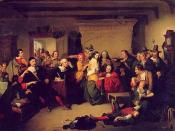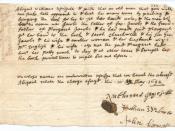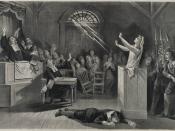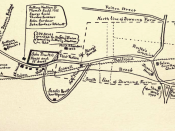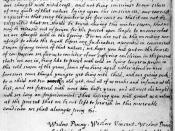In Arthur Miller's autobiography, Timebends, he writes that "the real story" of the Salem witch trials is to be found in "the breaking of charity" within a human community. I believe that "breaking of charity," means a breaking of loving and taking care of your fellow man. Many people, especially characters in a story or play, tend to be motivated to choose to breach this cultural norm. A character could want to save someone he loves or cares deeply for and in order to do that he might have to break the charity of his fellow companions. A character might also want to try to save them and in order to do that they may have to lie and deceive people thus breaking the charity. Throughout the play John Proctor, Abigail Williams, and Judge Danforth.
John Proctor is the main character that is faced with a crucible. John Proctor tries to tell everyone in Salem that the witch trials were nonsense.
Although he knew he was right, no one in the town believed him. Everyone was caught in the hysteria of the witch-hunt and the belief that their town was "impure." Thus John Proctor was labeled the "outspoken" character of the play. "No, I take my own, my own!" This quote proves that John is willing to take the blame for his own sins. "I speak my own sins; I cannot judge another. I have no tongue for it." This quote allows the readers to know that John Proctor only speaks about what he knows is the truth; he doesn't go around and tell rumors about other people being witches. John Proctor's actions to get his point across about the witch-hunts did not involve a "breaking of charity." John Proctor was basically the "good guy" in this play.
